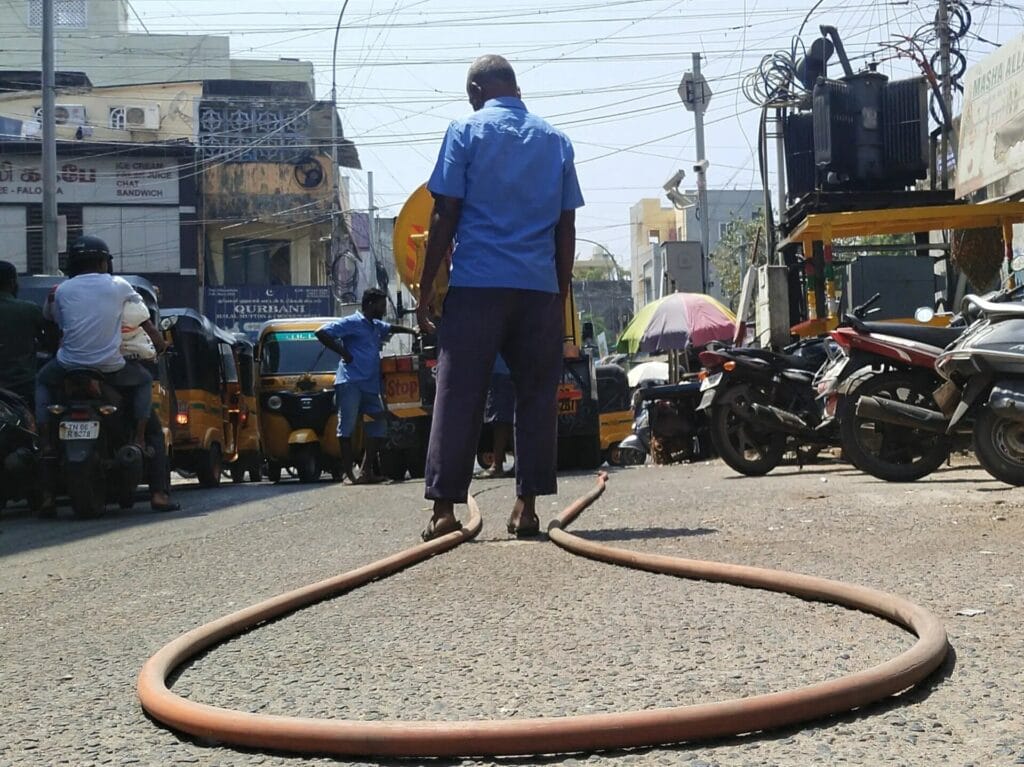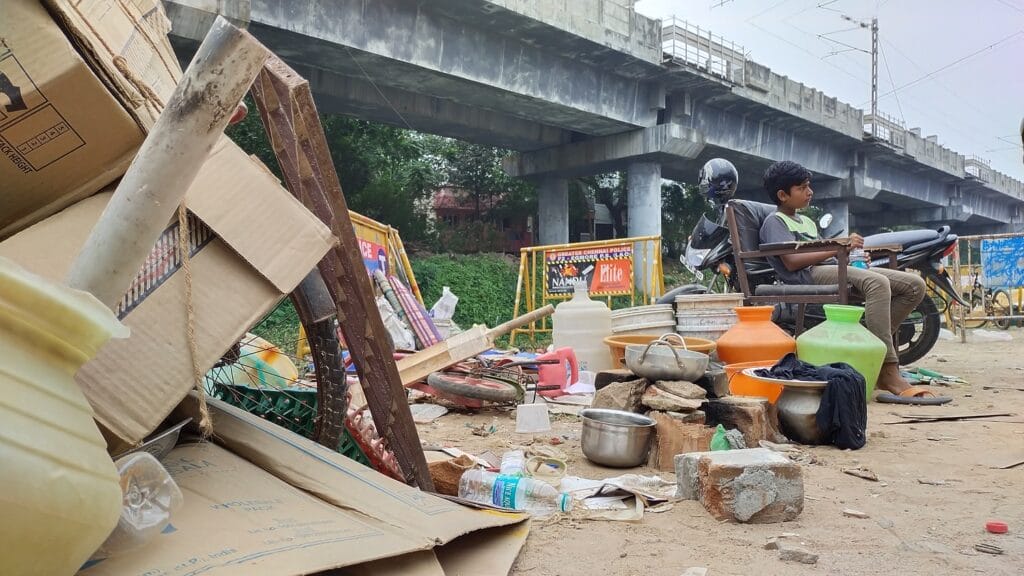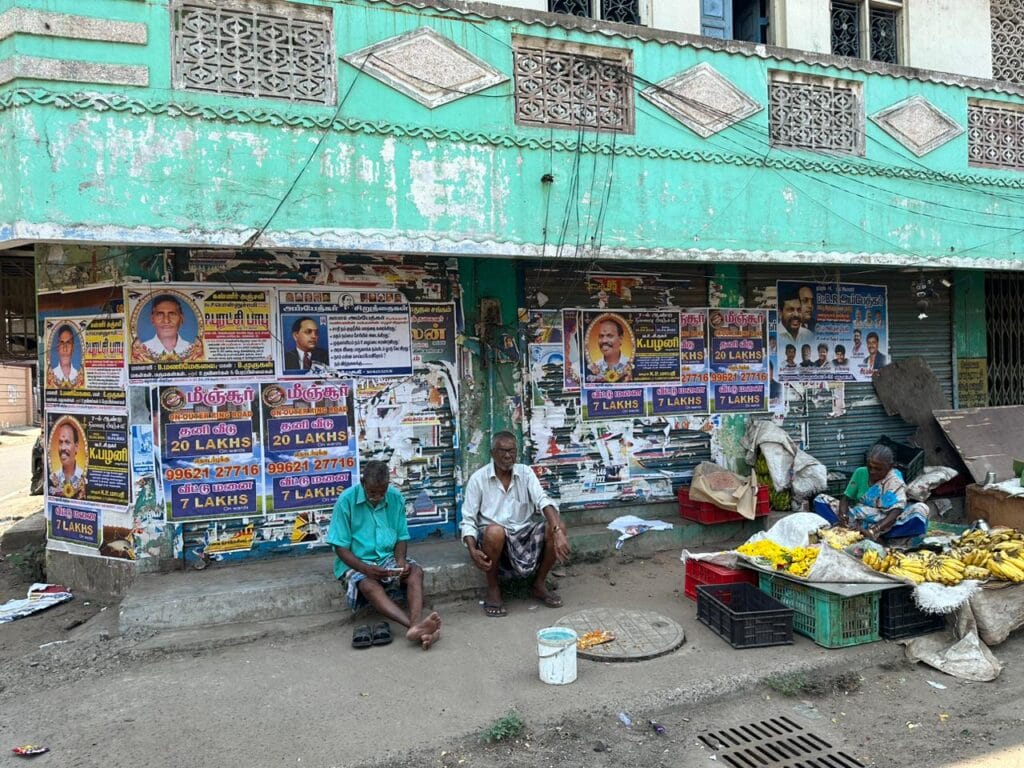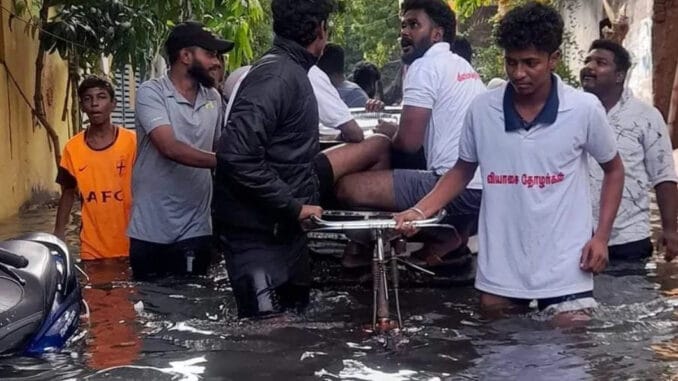Often, as journalists, we have an eye for the problems people face and so it is reflected in our stories. This is because every small impediment that we come across is connected to a larger systemic issue. While it is very important to highlight the problems, be it a minor civic issue or a larger systemic one, I learnt this year that we should also keep an eye out for stories that provide solutions to these issues.
Here are some of the stories that I worked on in 2023 that had a huge impact on me:
How a tuition centre in Chennai’s Vyasarpadi is helping keep children in schools
This is a story of hope and resilience. Vyasarpadi might be known for many things but often the people from the locality face caste-based discrimination at every level for no fault of theirs as the root cause lies in a larger social problem. Over the years, Vyasarpadi has also become synonymous with drug addiction, especially among schoolchildren.
The predicament here was that many parents were daily wage workers who toil hard to make ends meet. They neither have time to monitor their children after school hours nor could they provide a conducive environment for them to study at home.
To address this issue, the first-generation graduates from Vyasarpadi, started a free tuition centre seven years ago. They named it Dr Ambedkar Pagutharivu Padasalai. Over the years the students’ strength increased and they needed a place to conduct the classes. This is when the youngsters in the area along with the people’s support turned a public land known for anti-social activities, into a haven for the children. The parents of the children in the tuition centre, who are construction workers, pitched in to build the centre with their manual labour. The graduates play their part by helping the children with their education. Youngsters who are good at sports teach sports to the children. For children, who do not have a parent welcoming them home after school hours, the tuition centre is the home that greets them with warm hugs and listens to how their day was!
Nearly ten months after this story came out, the tuition centre faced a huge challenge. The public land, where the tuition centre is built belongs to the Slum Clearance Board (now TNUHDB). Citing it an ‘encroachment’, the TNUHDB issued an eviction notice. What’s ironic is that this community initiative was originally the responsibility of the Community Development Office of the TNUHDB. The talks are now on for permitting the tuition centre to continue in the same place.
This group of youngsters, who call themselves the ‘Vyasai Thozhargal’ (comrades of Vyasarpadi), reminds me that not all protests need to be on the streets. I hope, someday, the identity of Vyasarpadi changes and is known for producing ‘educated rational youngsters’ as Vyasai Thozhargal wishes.
Read more: How flawed eviction and resettlement are triggering child marriages in Chennai
All in a day’s work: What the metro water manual workers in Chennai face

This was one of the stories that impacted me the most. For the whole day, I shadowed a manual worker of the Chennai Metropolitan Water Supply and Sewerage Board (CMWSSB) ,who cleared the blocks in the underground drainage system. We live in an age, where we have technology for almost everything but not one that provides a practical solution for cleaning manholes.
Manual scavenging is banned under the Prohibition of Employment as Manual Scavengers and their Rehabilitation (PEMSR) Act, 2013. According to the Union Ministry for Social Justice and Empowerment, as many as 339 people have lost their lives while cleaning sewers and septic tanks in India between 2018 and 2023.
Kannan (name changed on request), the manual worker I shadowed, is of the opinion that in a country like India, it would be impossible to do away with manual scavenging. He said, “Even when we have lorries or robots, the structures we work with are still age-old. It is still called ‘manholes’, which means it is meant for humans to get inside and clean.”
Of all the things I observed and learned from these workers, what shocked me the most was the recruitment process for such jobs, that too by a government agency. While these workers were clearing a block in the manhole on a main road, the commuters angrily yelled at the manual workers as they passed by for causing inconvenience to their regular commute.
“Nobody respects us,” the workers said matter-of-factly, as if they were used to the incivility meted out to them.
It is disheartening to see the poor working conditions of the manual workers. Meanwhile, their lives also highlight the need for a large-scale systemic change.
Read more: Frontline workers in Chennai battle the rains with poor support and scarce empathy
School, interrupted – the toll of mid-academic year evictions on children in Chennai
Over the years, we have covered various aspects of evictions. This year too, we did a lot of in-depth coverage on eviction drives in Chennai. Among those stories, the one that is close to my heart is the story on the impact of mid-academic year evictions on the children in Chennai.

The loss of a home, community and security severely impacts children. Many children continue to suffer from psychological trauma and stress for a long time. The parents I spoke with also pointed out that the children find it very hard to sleep during the nights post-evictions.
Meanwhile, the story also brought out the poor state of infrastructure in the government schools located in resettlement colonies. This leaves the children with no other option but to travel back to their old schools every day. On average, the children in resettlement areas travel from 2.5 hours to 3.5 hours in a day. The story also provided recommendations to prevent the mid-academic year evictions, thereby upholding the rights of the children.
What wall posters say about life in Chennai
Having lived for a few years in Madurai, I have observed that wall posters play a major role in local politics. I have also been following the Greater Chennai Corporation’s initiatives to eradicate wall posters in Chennai.

This two-part story developed from pure curiosity. Take a walk through any street in Chennai and you will find at least one wall filled with various posters announcing a new movie in the theatres, the obituary of a senior citizen in the locality or the news of a political party meeting. What do posters say about life in the city? When do they cross the line from being informative to being a nuisance to the public?
Searching for answers to these questions, I happened to talk to a lot of people ranging from subject experts to printing unit owners; those who stick posters for their livelihood and those who order posters regularly. The answers to those questions transpired into the first part of the story, which dealt with the evolution of poster culture in Chennai, their role in the lives of working-class people and their political significance. The second part looked into the economy around the poster culture and the ways to regulate it.
Cyclone Michaung: North Chennai people left to fend for themselves
This was the first time I witnessed the Chennai floods in person and it definitely was not a good experience. With no electricity and mobile network to reach out to people, I felt handicapped as a journalist to not know what was happening around me. It is a heart-wrenching experience to witness people walking in chest-level water, packing all their life savings into one tiny bag. Helicopters, which once used to be a happy childhood memory, are no longer a symbol of the same.

When the mobile network was partially restored, I naturally started checking on my loved ones living in different parts of the city. It was then I came to know how badly North Chennai was affected and the people there were left to fend for themselves. If not for the volunteers, I do not think we will be able to handle any disaster in Chennai and this story precisely revealed the same.
Let us not forget that Chennai also saw one of the hottest summers reaching 42.6 degrees Celsius this year. All these major climatic events highlight the need to introspect on the development paradigm that we are currently on and make the necessary course corrections along the way.
Having said that, I hope to report more on stories of hope and resilience in the coming year.
Wish you all a very happy new year!
